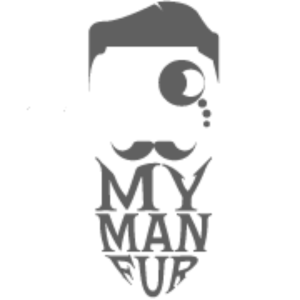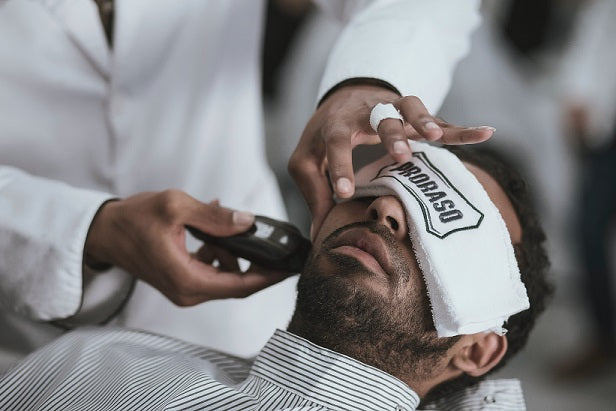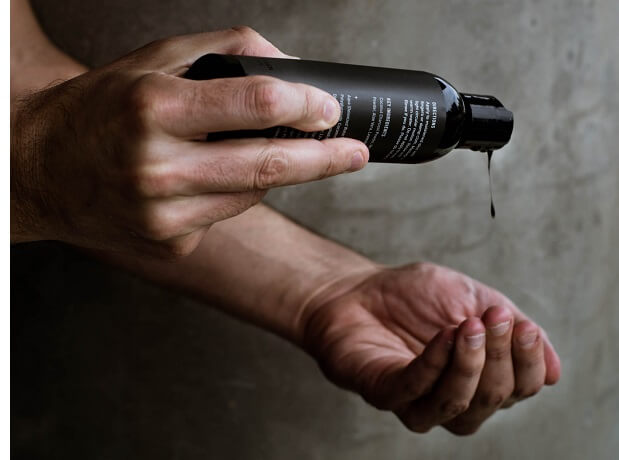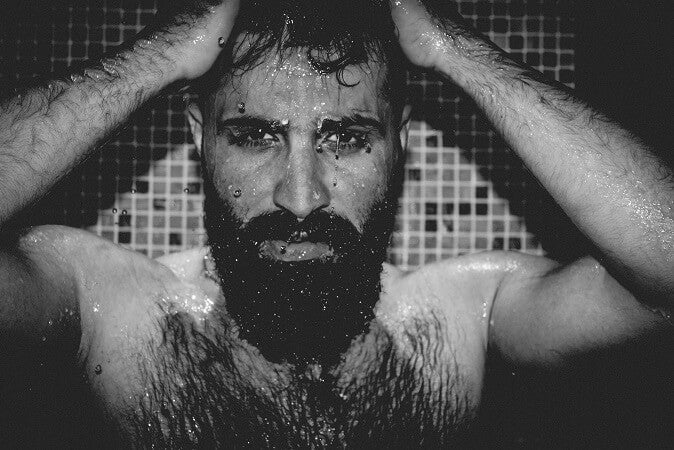Are you looking to get the most out of your beard brush? If so, then you've come to the right place! In this blog post, we'll be exploring the art of how to use a beard brush to its fullest potential. We'll be covering seven different pro tips on how to use your beard brush correctly and efficiently. From correctly cleaning it to selecting the perfect brush for your facial hair, we have you covered! So, if you're ready to learn more about how to use a beard brush, let's get started!
1. Wet or dry?

One of the first things you need to consider when using a beard brush is whether your beard is wet or dry. Generally speaking, brushing a dry beard will provide more control over the shape and direction of your facial hair, whereas brushing a wet beard will help to detangle and soften any knots or kinks.
However, there is no hard and fast rule when it comes to whether you should brush your beard wet or dry. It ultimately comes down to personal preference and what works best for your specific beard type.
If you decide to brush your beard when it is wet, make sure to be extra gentle and use a brush with softer bristles. This will help to avoid any pulling or tugging on the hairs, which can lead to breakage and damage. On the other hand, if you opt for a dry brush, be sure to use short, controlled strokes and pay extra attention to any problem areas.
In summary, whether you choose to brush your beard wet or dry depends on your individual needs and preferences. Just remember to use a gentle touch and always choose a beard brush with bristles that suit your beard type.
2. The amount of pressure you apply
Now that you have chosen the perfect brush, it’s important to pay attention to the pressure you apply while brushing. Applying too much pressure can irritate the skin beneath your beard and cause breakage in the hair, while not enough pressure will not help detangle the hair. You want to apply just enough pressure to gently comb through the beard, removing any knots and tangles without causing any damage.
If you feel like you have to apply a lot of pressure to get through your beard, try using a beard oil or beard balm to soften the hair before brushing. This will help to prevent breakage and make the brushing process easier. When applying the oil or balm, make sure to work it in from the root to the tip, ensuring that every strand is coated. This will help to keep your beard moisturized and looking its best.
Remember, be patient and take your time when brushing your beard. Rushing the process or applying too much pressure will only cause damage and lead to an unruly beard. Be gentle and enjoy the process of grooming your beard to perfection.
3. The direction you brush
The direction you brush your beard can make a huge difference in its appearance and overall health. It's essential to follow the natural direction of your beard's growth as brushing in the wrong direction can cause damage and breakage.
Start by combing downwards with a gentle stroke, ensuring that you're brushing through all of the hairs. Next, you can go against the grain or upward, depending on the style you're looking to achieve. However, make sure that you're not too aggressive in your brushing, as this can lead to irritation and discomfort.
If you're trying to achieve a fuller beard, it's best to brush against the grain, as this helps to lift the hair and distribute the natural oils throughout your beard. However, if you have a longer beard, it's essential to avoid brushing in different directions as it can cause tangling and knots. Instead, use a wide-toothed comb to gently work out any tangles.
It's essential to be consistent with the direction you brush your beard as this helps to train the hairs to grow in a specific direction. This can help to achieve the look you're after and ensure that your beard stays healthy and free from breakage. Remember to take your time and be gentle, as this can prevent any damage and ensure that your beard stays looking its best.
4. What type of brush?
When it comes to choosing a beard brush, there are several types of bristles available: synthetic, boar, and horsehair. While synthetic bristles can work well for shorter beards, natural bristles tend to be more effective for longer, thicker beards.
Boar bristle brushes are a popular choice for many men because they are firm and provide a good amount of friction, which can help to evenly distribute natural oils throughout your beard. Horsehair brushes, on the other hand, are softer and may be more appropriate for men with sensitive skin.
It's also worth noting that the size and shape of your brush will impact how well it works for your particular beard type. For example, a small, round brush may be best for shorter beards, while a larger, oval-shaped brush may be more appropriate for longer beards.
Ultimately, the type of brush you choose will depend on your individual needs and preferences. It's worth experimenting with different options to find the one that works best for you and your beard.
5. How often should you brush?
Now that you know how to brush your beard, the next question is how often you should do it. Well, the answer to that is, it depends.
Ideally, you should brush your beard every day, but some men might need to do it more or less often depending on their hair type and beard length.
If you have a shorter beard, you can get away with brushing it every other day. But if you have a long beard, it’s best to brush it at least once a day, preferably after you apply oil or balm.
Remember that brushing your beard not only helps it look good but also keeps it healthy. Brushing distributes natural oils throughout your beard, which moisturizes your skin and prevents dryness and itchiness.
So, whether you brush your beard once a day or more often, make sure to do it regularly to keep it looking great and feeling healthy.
6. Pre-treatment
Before you start using your beard brush, it's important to prep your beard first. This will not only make brushing easier but also more effective in removing tangles and dead skin cells.
Start by washing your beard with a good quality beard shampoo and conditioner. This will help soften the hairs and make them more pliable. Rinse your beard thoroughly and pat it dry with a towel.
Next, apply a beard oil or balm to your beard. This will help moisturize and condition your beard hair and make it easier to brush. Work the product into your beard using your fingers and ensure that it reaches the skin underneath.
Give the oil or balm some time to absorb into your beard, ideally for a few minutes. This will ensure that your beard hair is properly nourished and ready for brushing.
By pre-treating your beard, you'll not only make brushing easier and more effective, but also help keep your beard looking healthy and well-groomed. So, don't skip this crucial step and take the time to prep your beard properly before you start brushing.



